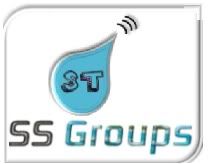Operating systems control different computer processes, such as running a spreadsheet program or accessing information from the computer's memory. One important process is interpreting commands, enabling the user to communicate with the computer. Some command interpreters are text oriented, requiring commands to be typed in or to be selected via function keys on a keyboard. Other command interpreters use graphics and let the user communicate by pointing and clicking on an icon, an on-screen picture that represents a specific command. Beginners generally find graphically oriented interpreters easier to use, but many experienced computer users prefer text-oriented command interpreters.
Operating systems are either single-tasking or multitasking. The more primitive single-tasking operating systems can run only one process at a time. For instance, when the computer is printing a document, it cannot start another process or respond to new commands until the printing is completed.
All modern operating systems are multitasking and can run several processes simultaneously. In most computers, however, there is only one central processing unit (CPU; the computational and control unit of the computer), so a multitasking OS creates the illusion of several processes running simultaneously on the CPU. The most common mechanism used to create this illusion is time-slice multitasking, whereby each process is run individually for a fixed period of time. If the process is not completed within the allotted time, it is suspended and another process is run. This exchanging of processes is called context switching. The OS performs the “bookkeeping” that preserves a suspended process. It also has a mechanism, called a scheduler, that determines which process will be run next. The scheduler runs short processes quickly to minimize perceptible delay. The processes appear to run simultaneously because the user's sense of time is much slower than the processing speed of the computer.
Operating systems can use a technique known as virtual memory to run processes that require more main memory than is actually available. To implement this technique, space on the hard drive is used to mimic the extra memory needed. Accessing the hard drive is more time-consuming than accessing main memory, however, so performance of the computer slows.
CHILLAPPLE Group International with SUPER SOFTWARE & SUPER TECHNOLOGY Group - A Joint Venture - Free Technology Update is a new blog on blogger blogspot provides frequent updates and latest happenings in the field of technology along with tech reviews, news and rumors. Technology Update | Technology Updates brings latest Technology News related to Computers, Softwares, Mobiles, Facebook, MySpace, Google, Microsoft,
Subscribe via email
Recent Posts
Manufacturers
Sponsor
Archives
- December 2010 (3)
- September 2010 (17)
- August 2010 (9)
- July 2010 (65)
- June 2010 (60)
- May 2010 (221)
- April 2010 (29)
- January 2010 (114)
- December 2009 (18)
- November 2009 (59)
- October 2009 (44)
- September 2009 (50)
Products
Our network

CHILLAPPLE Technology Updates by CHILLAPPLE Groups is licensed under a Creative Commons Attribution-ShareAlike 3.0 Unported License.
Based on a work at superstechnology.blogspot.com.
3d
a
acer
Apple
ar
asus
b
benq
blackberry
c
canon
cellphone
computer basics
d
dell
digital camera
e
external
f
FireFox
g
Games
Gigabyte
google
guest-post
h
Honda
hp
i
Intel
internet
iphone
ipods
l
laptops
lcd
lenovo
lg
linux
m
make money
Microsoft
monior-analysis download
monitors
motorola
multimedia downloads
n
netbook
nokia
notebook
p
Panasonic
Philips
Play Station
pmp
portable
Projectors
s
samsung
smartbook
smartphone
sony
sony ericsson
t
tablet
Technology
toshiba
touch screen
u
USB Hub
v
viliv
w
webcams
windows
Followers
Credits
| This Site CHILL APPLE TECHNOLOGY Wing has been maintained by Mr. D. Vignesh Sha, Professional Blogger with lot of experience through, SUPERSTECHNOLOGY (A Unit of SS Groups.) |
Sponsor
Future Begins Here !
Copyright © 2009 - 2010. CHILLAPPLE Group.















